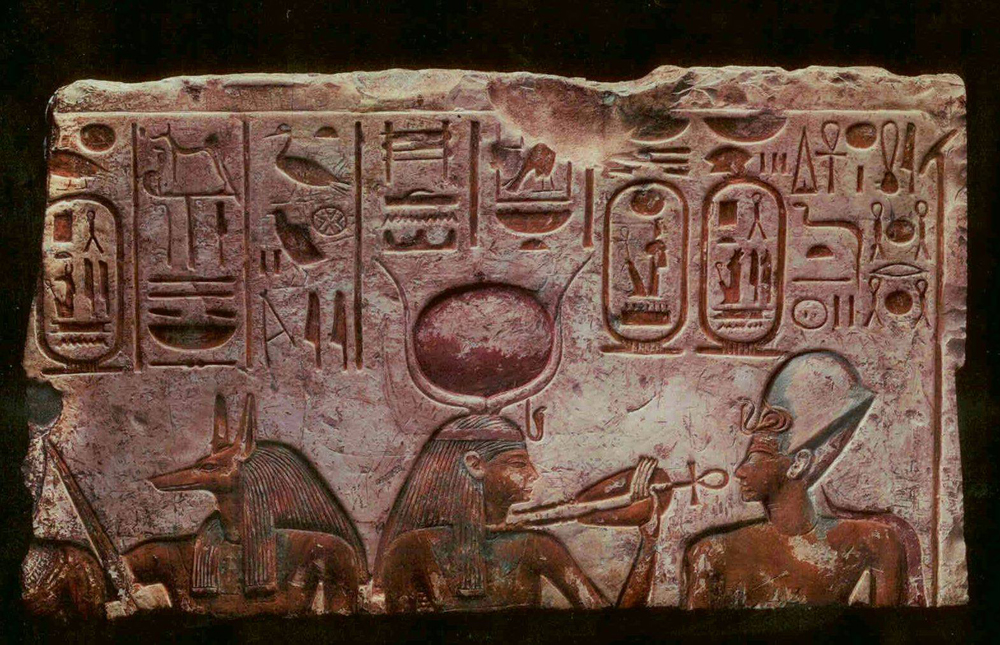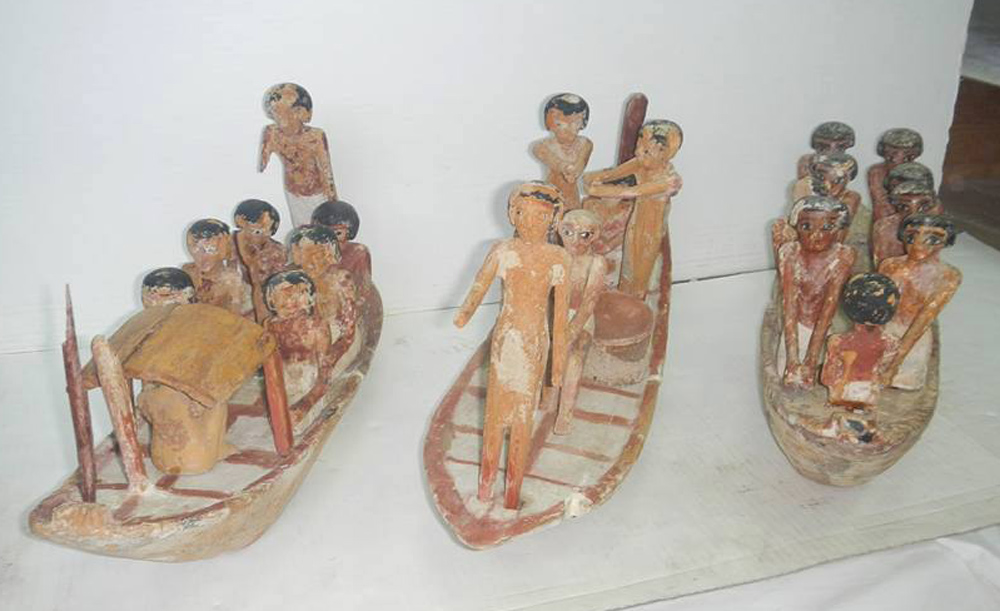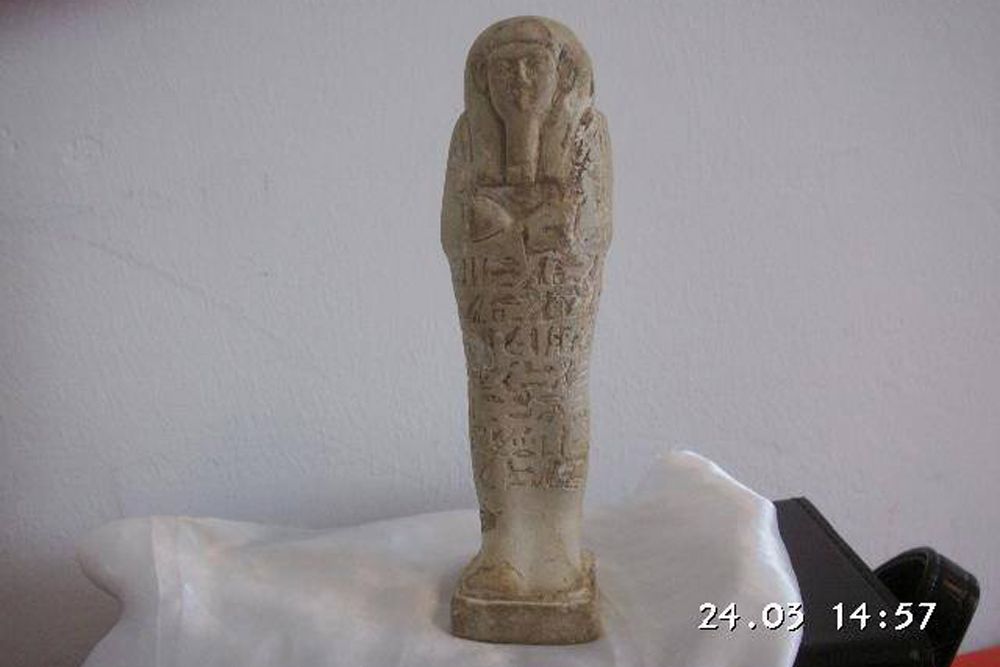Reclaimed History: 9 Repatriated Egyptian Antiquities
Egypt has long encouraged the return of its ancient artifacts, including an elaborate wall carving of the pharaoh Seti I that was recently returned from England. Here's a look at nine reclaimed artifacts that were once part of the underground marketplace for smuggled items. The photos are coutesy of Egypt's Ministry of Antiquities.
A call for returns
A stone stela featuring pharaoh Seti I has returned to Egypt from the United Kingdom, according to a November 2015 announcement by the Egyptian Ministry of Antiquities. Egypt has long pushed for the repatriation of antiquities from around the world, including calling for the return of famous artifacts such as the Rosetta Stone.
Exciting possibilities
The stone stela measures 26 inches long (67 centimeters) and 17 inches tall (43 centimeters). It's carved with an image of Seti I, pharaoh of Egypt between about 1290 B.C. and 1279 B.C. Seti I stands by the goddess Hathor and the god Wepwaet. The piece may come from a temple wall, according to the Ministry of Antiquities. No temple of Seti I has ever been found, so this illegally excavated piece might hint at such a temple waiting to be discovered.
On their toes
Repatriated funerary boats go on display at the Cairo Museum in December. The boats were returned to Egypt by the United States. U.S. Customs and Border Protection seized these boats in a smuggled shipment at the Detroit Metropolitan Airport in 2010, according to U.S. Immigration and Customs Enforcement (ICE). They're among the 80 items ICE has returned to Egypt since 2007, a haul that includes coins, limestone reliefs and a Greco-Roman style sarcophagus.
Get the world’s most fascinating discoveries delivered straight to your inbox.
A global effort
This small statue, or ushabti, was placed in an ancient Egyptian tomb to do the work of the dead person in the afterlife. Austrian authorities seized it from an Austrian citizen who was trying to sell it; it was repatriated to Egypt in November 2015.
Smuggled cultural and art objects are at the center of a global black market. ICE alone has returned 7,800 artifacts to countries around the world since 2007 — everything from paintings to stolen dinosaur bones. According to the agency, international networks of smugglers, restorers and money launderers conspire to move these objects around the globe.
Returned in good faith
This funeral mask was turned over to authorities in Berlin by a German citizen who had it in his or her possession, according to the Ministry of Antiquities. It dates to between 300 B.C. and 500 B.C. Many antiquities left Egypt when the country was under colonial rule, making tracing their history and origins difficult.
Femme fatale
A carved female figurine that dates back to the New Kingdom (between the 16th century and the 11th century B.C.) was stolen from the Saqqara Museum, according to the Egyptian Ministry of Antiquities. It was returned to Egypt in October 2015. At 13 inches (33 centimeters) in length, this statuette was likely part of a cosmetics kit.
Home again
A 35,000 year-old skeleton repatriated to Egypt from Belgium. "Nazlet Khater Man" was discovered in 1980 by a team of Belgian archaeologists from Leuven University. The skeleton belonged to a young man and was buried with an axe.
Leuven University kept the skeleton until August 2015, when a diplomatic effort brought Nazlet Khater Man back to Egypt. The skeleton is one of the oldest ever found in Egypt.
Unknowing accomplice
A fragment of a column from the temple of Thutmosis IV, who ruled Egypt during the 14th century B.C. According to the Ministry of Antiquities, this piece was smuggled out of Egypt to London in the past few years. According to the Ministry, a British citizen was in possession of the piece and was not aware that it was stolen. The carving depicts the god Amun Re.
Caught in the act
This statue fragment almost made it out of Egypt, but police caught it at the border — preventing a future repatriation, or another artifact lost to the black market. According to an investigation, crews dug this 4.6 foot (140 centimeter) block out of the ground during the construction of a new residential building in the city of Akhmim Sharq and removed it. From there, someone attempted to move the statue piece through Egypt's western border.
The statue is undergoing cleaning and study, the Ministry of Antiquities announced in March.
Follow Stephanie Pappas on Twitter and Google+. Follow us @livescience, Facebook & Google+. Original article on Live Science.

Stephanie Pappas is a contributing writer for Live Science, covering topics ranging from geoscience to archaeology to the human brain and behavior. She was previously a senior writer for Live Science but is now a freelancer based in Denver, Colorado, and regularly contributes to Scientific American and The Monitor, the monthly magazine of the American Psychological Association. Stephanie received a bachelor's degree in psychology from the University of South Carolina and a graduate certificate in science communication from the University of California, Santa Cruz.











